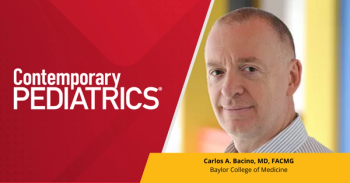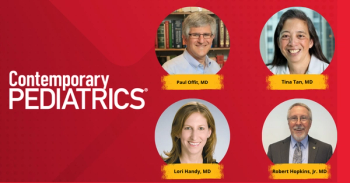
Consider fluoxetine plus cognitive-behavior therapy for adolescent depression
Investigators compared four protocols for treating major depressive disorder in adolescents who ranged from 12 to 17 years old.
Investigators compared four protocols for treating major depressive disorder in adolescents who ranged from 12 to 17 years old-noting that meta-analyses of antidepressant trials in such patients have yielded inconsistent findings. The four protocols were studied over a 12-week period: fluoxetine (Prozac) alone, cognitive-behavior therapy (CBT) alone, CBT plus fluoxetine, and placebo.
Depression among the 439 participants ranged from mild to severe; more than half had at least one other psychiatric disorder (even though some such disorders were grounds for exclusion), such as anxiety, obsessive-compulsive disorder, and attention deficit hyperactivity disorder (patients taking a psychostimulant were not excluded). The two primary outcome measures were the total score on the Children's Depression Rating Scale-Revised and the improvement score on the Clinical Global Impressions (CGI).
Fluoxetine was started at a dosage of 10 mg/day and increased to 20 mg/day at week 1 and, if necessary, to a maximum of 40 mg/day by week 8. CBT included psychoeducation about depression and its causes, goal setting, mood monitoring, increased participation in pleasant activities, social problem-solving, and cognitive restructuring. In the latter weeks of the study period, CBT also addressed individual patients' deficits in social skills, such as communication, negotiation, and compromise.
Clinically significant suicidal thinking, present in 29% of the sample at baseline, improved significantly in the four treatment groups, with the greatest reduction noted in the group treated with fluoxetine plus CBT. Those receiving fluoxetine alone showed the least improvement. Thirty-three (7.5%) of the 439 patients experienced a harm-related adverse event, 23 of which could be defined as serious.
The rate of harm-related events was highest in the fluoxetine alone group (11.9%), followed by fluoxetine plus CBT (8.4%), CBT alone (4.5%), and placebo (5.4%). Psychiatric-related adverse events, such as mania, irritability, and sleep problems, were more common in patients receiving fluoxetine plus CBT or fluoxetine alone, compared with CBT alone or placebo. All patients who had an adverse event responded to dose reduction, treatment modification, addition of an out-of-protocol treatment, or discontinuation of treatment (Treatment for Adolescents with Depression Study Team: JAMA 2004;292:807.)
Commentary: Zito and others have reported a rise in the prescribing of selective serotonin reuptake inhibitors (SSRIs) by pediatricians (Pediatrics 2002;109:721). If prescribing SSRIs is part of your practice, note well this article and other recent developments in this area of care (see Updates). Fluoxetine was most effective in conjunction with CBT; your challenge is to find access to this therapy for your patients.
Newsletter
Access practical, evidence-based guidance to support better care for our youngest patients. Join our email list for the latest clinical updates.








